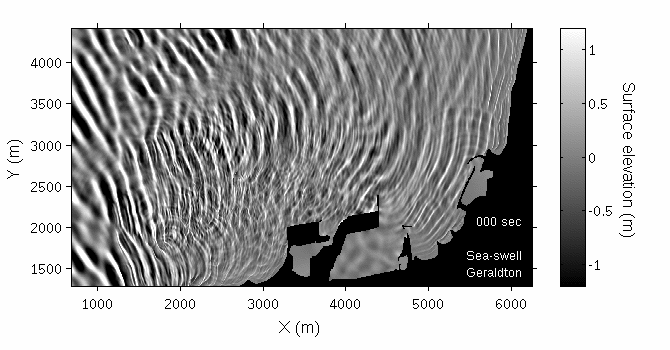
Long Waves
Accurate surge forecasting for ports.
Long waves (also called infra-gravity waves) cause problems in harbours and terminals in many countries around the world.
These waves can't be seen as they are usually masked by the sea and swell waves. However, only very small amplitudes (5-10 cm) can still energise a moored ship and cause excessive movement and surging against the mooring lines.
Long wave ship movement leads to operational inefficiency, compromises to safety and direct costs from ruptured lines.
Long wave forecasting
For over 15 years MetOcean Solutions has been providing specialist services to help port operators better manage long wave problems. Having studied long waves at more than 35 locations worldwide, our science team has experience with every type of long wave-affected port, and has developed a range of effective forecasting solutions.
We know that long waves have a particular range of periods for a given berth, and some of those periods can directly excite a moored ship – creating the problematic surge. Ship response on the mooring is directly correlated to long wave height. By forecasting the long wave height for the correct period range, a very good proxy for the excitation potential can be produced. This is a highly effective technique that has been well established and is relied upon by ports throughout New Zealand and Australia.
Long waves are generated during the arrival of swell waves at the coast. Using numerical models, calibrated with measured data to characterise the wave climate both inside and outside harbours, the long wave surge forecast provides a clear guide for development of problem surging conditions.
The core technique is semi-empirical; measurements of long waves at specific berths are used to define a spectral transformation from outside the harbour. The method is very robust, needs only 1-3 months of measured data to calibrate, and we have special wave metres to loan to our client ports to help them make the measurements.
Specialist service
MetOcean Solutions studied LPW at more than 35 ports
Robust technique
Highly effective and well established
Measurements
Special wave meters to define wave transformation
Wave climate
Characterised for both insideand outside harbours
Safe & efficient
Operations by forecasting LWP at your port berth
Hourly data
Hourly data to seven days updated 4 times a day.
Example of a 7-day long wave forecast. Different wave period ranges will have distinct effects on different ship types and sizes. Wave height thresholds are set up to indicate the successive levels of potential hazard to the vessels and infrastructure.
“MetOcean Solutions has worked exceptionally hard to assist the Port of Geraldton with its surge problem.
The product they now deliver is heavily relied on when scheduling shipping. The efficiencies gained in reduced labour costs to port users are significant, but it is the contribution to safety that represents the greatest gain. In 2005 there were 242 parted ships lines at Geraldton.
Following the developments in forecasting long wave effects at Geraldton, last year there were only 30 parted ships lines. This was the lowest number of parted lines since records have been kept. MetOcean Solutions is keeping Geraldton Port efficient and port workers safe.”
— Captain Ross Halsall, Harbourmaster, Geraldton Port, Australia.



